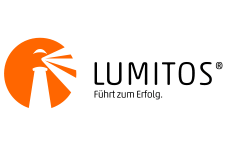Um alle Funktionen dieser Seite zu nutzen, aktivieren Sie bitte die Cookies in Ihrem Browser.
my.chemie.de
Mit einem my.chemie.de-Account haben Sie immer alles im Überblick - und können sich Ihre eigene Website und Ihren individuellen Newsletter konfigurieren.
- Meine Merkliste
- Meine gespeicherte Suche
- Meine gespeicherten Themen
- Meine Newsletter
10 Infografiken zum Thema Ketone
rss| Sie können Ihre Recherche weiter verfeinern. Wählen Sie aus dem linken Bereich passende Suchfilter aus, um Ihre Ergebnisse gezielt einzugrenzen. |
Farbe und Aroma
Paprika gibt es in verschiedenen Farbtönen, von frischem Grün bis hin zu leuchtendem Rot. Dahinter verbergen sich chemische Pigmente, aber was ändert sich, damit sich Paprika durch dieses Farbspektrum bewegt? Hier werfen wir einen Blick auf die Verbindungen hinter den Farben (sowie etwas ...
Die Chemie der Himbeeren
Himbeeren enthalten, wie alle Früchte, eine komplexe Zusammensetzung aus organischen Verbindungen. Im Gegensatz zu vielen anderen Früchten haben Himbeeren jedoch die weniger verbreitete Eigenschaft, ihren Namen der Verbindung zu geben, die einen wichtigen Beitrag zu ihrem Aroma leistet - und eine ...
Halloween Spezial
Gefälschtes Blut ist ein unverzichtbares Accessoire, wenn Sie sich für einen blutigen Halloween-Look mit Ihrem Kostüm in diesem Jahr entscheiden. Es steckt viel Chemie in der Substanz, die Sie nachahmen wollen; wir können die Farbe, den Geruch und die verschiedenen Arten von Blut mit Hilfe der ...
The Chemistry of Cloves
Cloves are a spice that you may well have stowed away somewhere in the kitchen; originally from the Maluku Islands in Indonesia, the spice itself comes from the flower buds of the clove tree. It is used to flavour food, imparting a sweet, aromatic flavour, and also one of the common spices used ...
The Chemistry of Raspberries
Raspberries, like all fruits, contain a complex mix of organic compounds. Unlike many fruits, however, raspberries have the less common distinction oflending their name to the compound that is a major contributor to their aroma – and one of the compounds that contributes to their flavour has ...
The Chemistry of Blackcurrants
Blackcurrants and cat urine. Two things you probably wouldn’t expect to have a whole lot in common, if anything. However, to some, blackcurrants and blackcurrant bushes can have a distinct smell of cat urine, and the chemistry behind this strange phenomenon reveals an unexpected link between our ...
A functional group in chemistry is the part of the molecule that gives it its particular reactivity; simple molecules that contain the same functional group in their structure can be expected to react in similar ways. More complicated chemical molecules may contain more than one functional group ...
Today’s post is a quick one with a look at alcohol oxidation reactions. This graphic tries to provide a basic summary of the reagents used, equipment required, and ways of identifying the products formed. A prominence is given to sodium and potassium dichromate as oxidising agents, despite the ...
Whether you know it as an Erlenmeyer flask, conical flask, or by some other name, it’s a piece of glassware most of us, chemists or not, have likely used at some point. The Erlenmeyer flask isthe most stereotypical piece of chemistry glassware there is, and today marks its creator’s birthday. ...
The Aroma of Bacon
When it comes to breakfasts, there are few aromas better than that of bacon, sizzling and crisping in a pan. As part of a brief new series looking at the chemicals behind aromas, this graphic considers the chemicals that lend bacon it’s characteristically mouth-watering scent. Considering that ...
Sie erhalten passend zu Ihrer Suche die neusten Suchergebnisse per E-Mail. Dieser Service ist für Sie kostenlos und kann jederzeit abbestellt werden.













